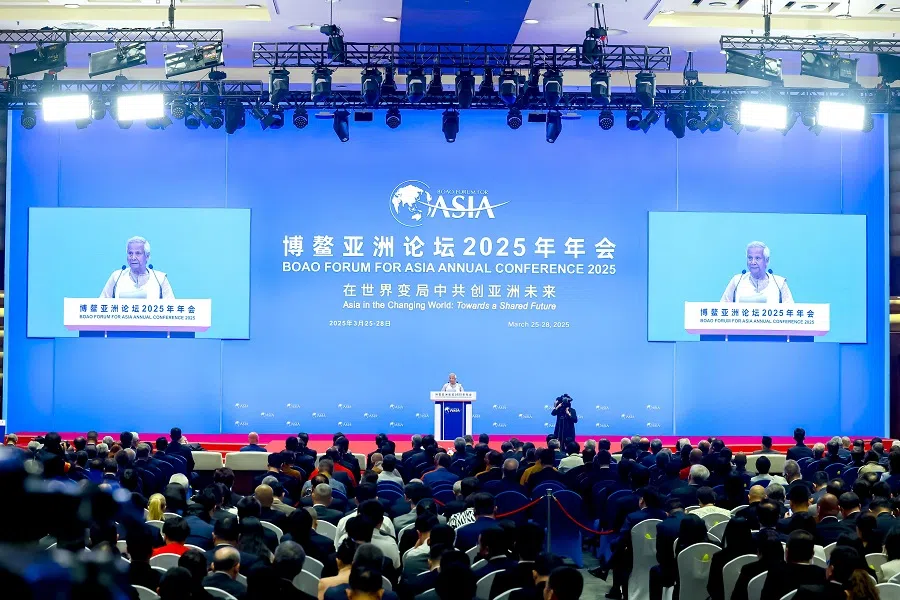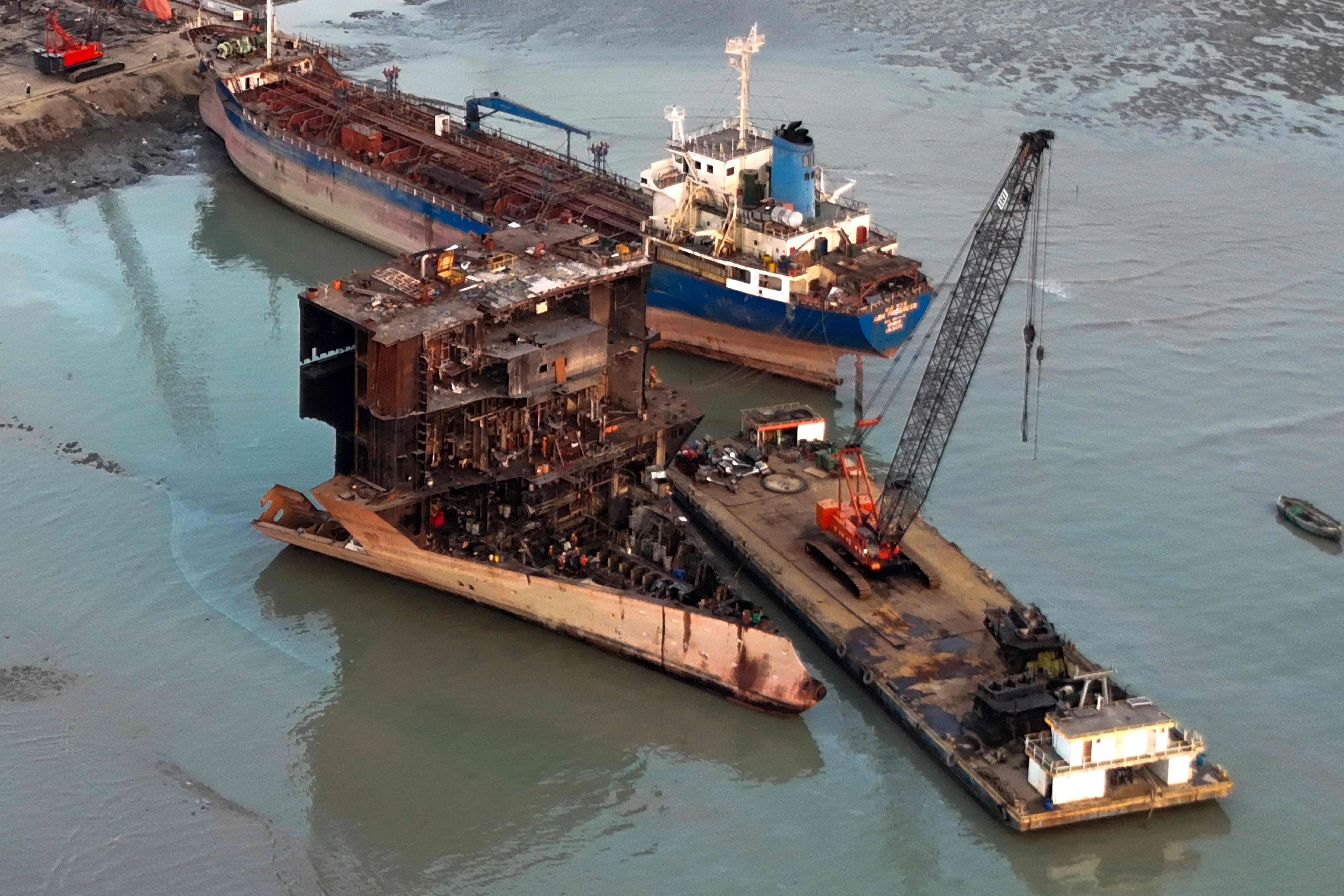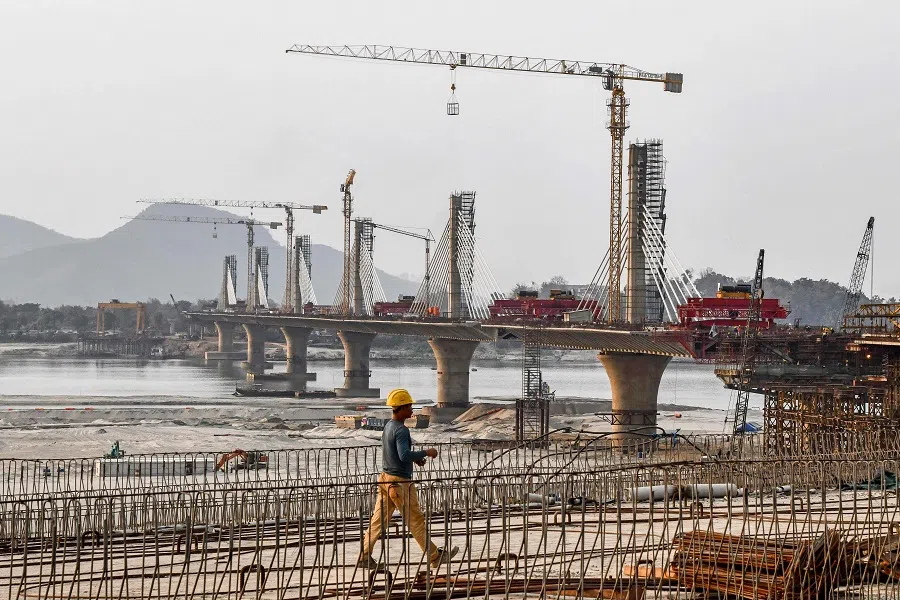Can Bangladesh secure its water future with China and India?
Bangladesh’s water diplomacy with China and India reflects Dhaka’s efforts to address its growing water needs while trying to balance the complex geopolitical situation in the region, say Singapore-based Indian researcher Amit Ranjan and Australian researcher Genevieve Donnellon-May.

In a landmark moment for Dhaka-Beijing relations, Bangladesh’s chief adviser to the interim Bangladeshi government, Muhammad Yunus, embarked on a significant four-day visit to China from 26-29 March. This year also marks 50 years of Bangladesh-China relations.
Yunus chose China over India for his first bilateral trip mainly because he did not receive a positive response to a proposal to visit New Delhi. With China already Bangladesh’s fourth-largest lender, providing US$7.5 billion in loans since 1975, this visit highlights the growing strength of Dhaka-Beijing ties and signals a new chapter in bilateral cooperation.

During the four-day visit, Bangladesh and China signed key agreements to deepen economic and technical cooperation. The most significant was an agreement on economic and technical collaboration, alongside eight memoranda of understanding (MOUs) covering investment, infrastructure, technology and cultural exchange. Both countries committed to accelerating Belt and Road Initiative (BRI) cooperation and advancing the China-Bangladesh Comprehensive Strategic Cooperative Partnership.
Additionally, Bangladesh secured a commitment of US$2.1 billion in investments, loans and grants for key infrastructure projects from the Chinese government and private companies, highlighting China’s pivotal role in Bangladesh’s modernisation and development.
Bangladesh cannot resolve these issues alone and must cooperate with its upstream neighbours to address the situation. Projections are grim. Estimates suggest that by 2050, one in seven Bangladeshis could be displaced by climate change.
Beijing-Dhaka cooperation on water matters
During Yunus’s visit to China, one of the main focuses was Bangladesh’s water sector, which faces significant challenges. The country’s renewable surface water flow is about 1,210 cubic kilometres, while groundwater recharge ranges between 28 and 65 cubic kilometres. Water usage is heavily skewed: 86% for agriculture, 12% for domestic supply and 2% for industry.
Bangladesh is highly dependent on its upstream neighbours, with over 90% of its rivers flowing from India, Myanmar and China. Climate change further worsens the situation, with rising sea levels and unpredictable weather patterns stressing the nation’s water systems. Bangladesh’s low-lying topography, extensive floodplains and long coastlines make it particularly vulnerable.

The situation is severe. In a study titled “Dried Up Rivers of Bangladesh”, the Rivers and Delta Research Centre found that at least 79 of the 1,156 government-listed rivers in the country have dried up or are drying up, including the Teesta. The study underscores that Bangladesh cannot resolve these issues alone and must cooperate with its upstream neighbours to address the situation. Projections are grim. Estimates suggest that by 2050, one in seven Bangladeshis could be displaced by climate change.
Yunus sought China’s expertise in water management, requesting a 50-year master plan for the sustainable management of Bangladesh’s river systems to help establish a long-term framework for effective water resource management.
Bangladesh announced an extension of the deadline for the Chinese state-owned enterprise Power Construction Corporation of China to complete the master plan for the TRCMP by 2026, with an initial draft expected by the end of last year. This change reflects Bangladesh’s increasing closeness to Beijing in post-Hasina days.
Significantly, during Yunus’s visit, the two countries agreed on China’s participation in the Teesta River Comprehensive Management and Restoration Project (TRCMP) in the greater Rangpur region. Both China and India had previously shown interest in the project, and in 2020, China offered nearly US$1 billion in loans to help manage water levels during the dry season.
In July 2024, then Prime Minister Sheikh Hasina expressed a preference for India to undertake the TRCMP. However, after Hasina’s exit last year, in February 2025, Bangladesh announced an extension of the deadline for the Chinese state-owned enterprise Power Construction Corporation of China to complete the master plan for the TRCMP by 2026, with an initial draft expected by the end of last year. This change reflects Bangladesh’s increasing closeness to Beijing in post-Hasina days.
The Yarlung Zangbo-Jamuna River and regional dynamics
An important topic of discussion during Yunus’s visit was the potential impact of large-scale water projects on the Yarlung Zangbo-Jamuna River, which flows through Bangladesh, China, and India. The two countries agreed to advance the Implementation Plan of the MOU on the Exchange of Hydrological Information for this vital river.

In December 2024, China approved the US$137 billion Medog hydropower dam project on the Yarlung Zangbo, known as the Brahmaputra River as it enters India, and the Jamuna River in Bangladesh. The Chinese project raised concerns, particularly in India, as the Brahmaputra’s flow is crucial to India’s northeastern states of Arunachal Pradesh and Assam. While Bangladesh did not react to the project publicly, in February 2025, Bangladesh’s Ministry of Water Resources requested four key documents from China: an environmental impact assessment, feasibility study, climate impact assessment, and disaster impact assessment.
At the time of writing, Bangladesh has not received a response from Beijing, though Chinese officials assured Bangladesh that the dam would be a run-of-the-river hydropower project with no water diversion.
Yunus’s visit to Beijing signals a potential deepening of China-Bangladesh cooperation on water projects, which could strain relations with India because of India-China competition in South Asia.
Navigating water cooperation with India
As India and Bangladesh share 54 rivers, the former is the most important country for Dhaka’s water. Out of 54, India and Bangladesh have agreements only on eight rivers. The Ganga/Ganges water is currently governed by a bilateral agreement between India and Bangladesh, while an interim agreement on the Teesta River has not yet been finalised.
The 1996 Ganga/Ganges Waters Treaty, which will expire in 2026 is set for a renewal, though the terms will depend on the evolving political landscape between India and Bangladesh, and India’s water needs. In a show of good faith, in March 2025, Bangladeshi experts participated in the 86th meeting of the Joint Technical Committee and Joint River Commission in the Indian city of Kolkata.

Meanwhile, negotiations over the Teesta, the fourth-largest transboundary between India and Bangladesh, remain stalled. In 2011, a draft agreement proposed allocating 37.5% of the Teesta waters to Bangladesh, 42.5% to India during the dry season, and rest flows to maintain the environment. However, this was never finalised due to opposition from Mamata Banerjee, the chief minister of the Indian state of West Bengal. Both the federal government of India and Bangladesh tried to convince Mamata Banerjee. However, they did not succeed.
Yunus’s visit to Beijing signals a potential deepening of China-Bangladesh cooperation on water projects, which could strain relations with India because of India-China competition in South Asia. While China’s role in Bangladesh’s water management and infrastructure development is increasing, Dhaka needs a fruitful engagement with New Delhi because of its dependence on rivers flowing from India.






